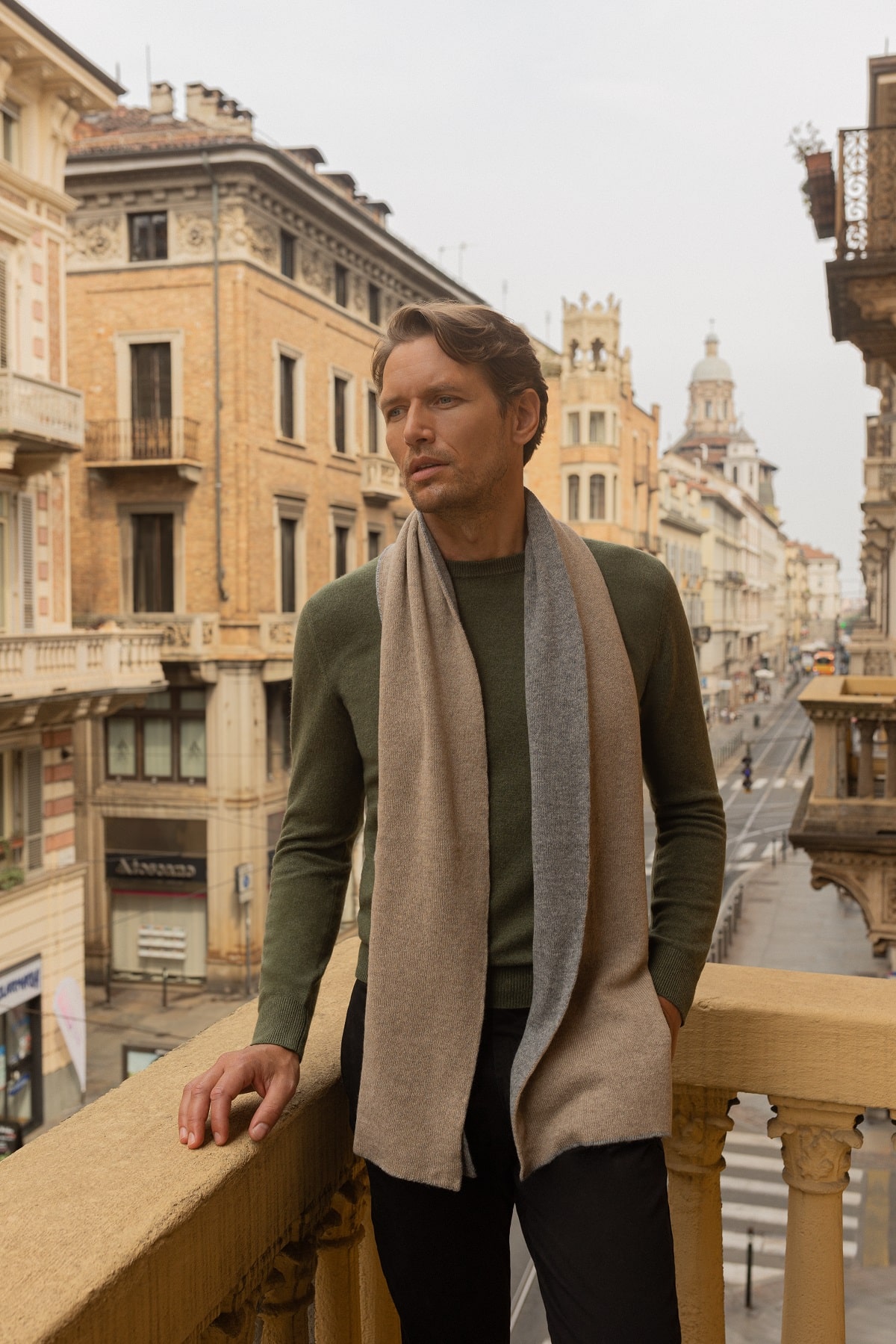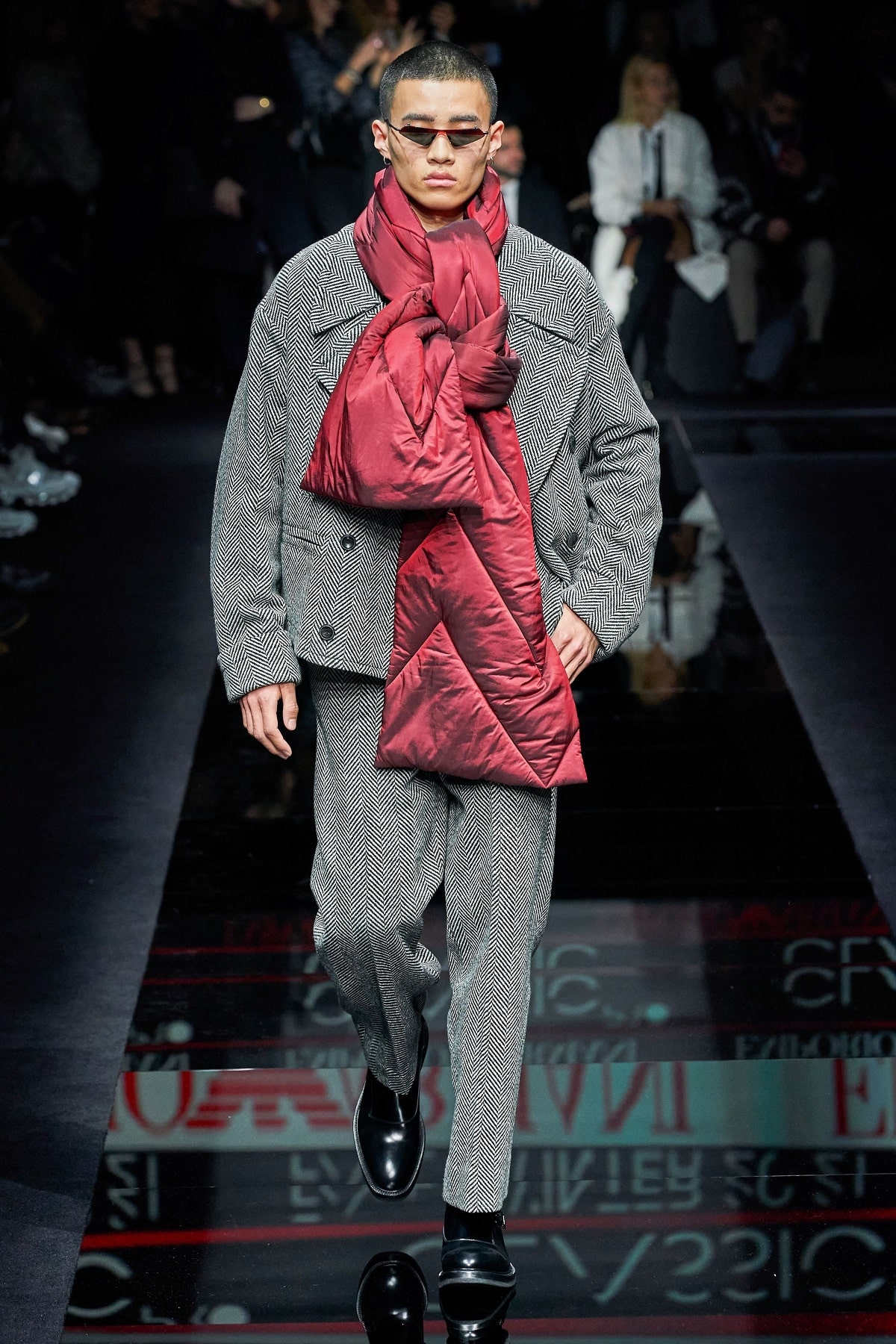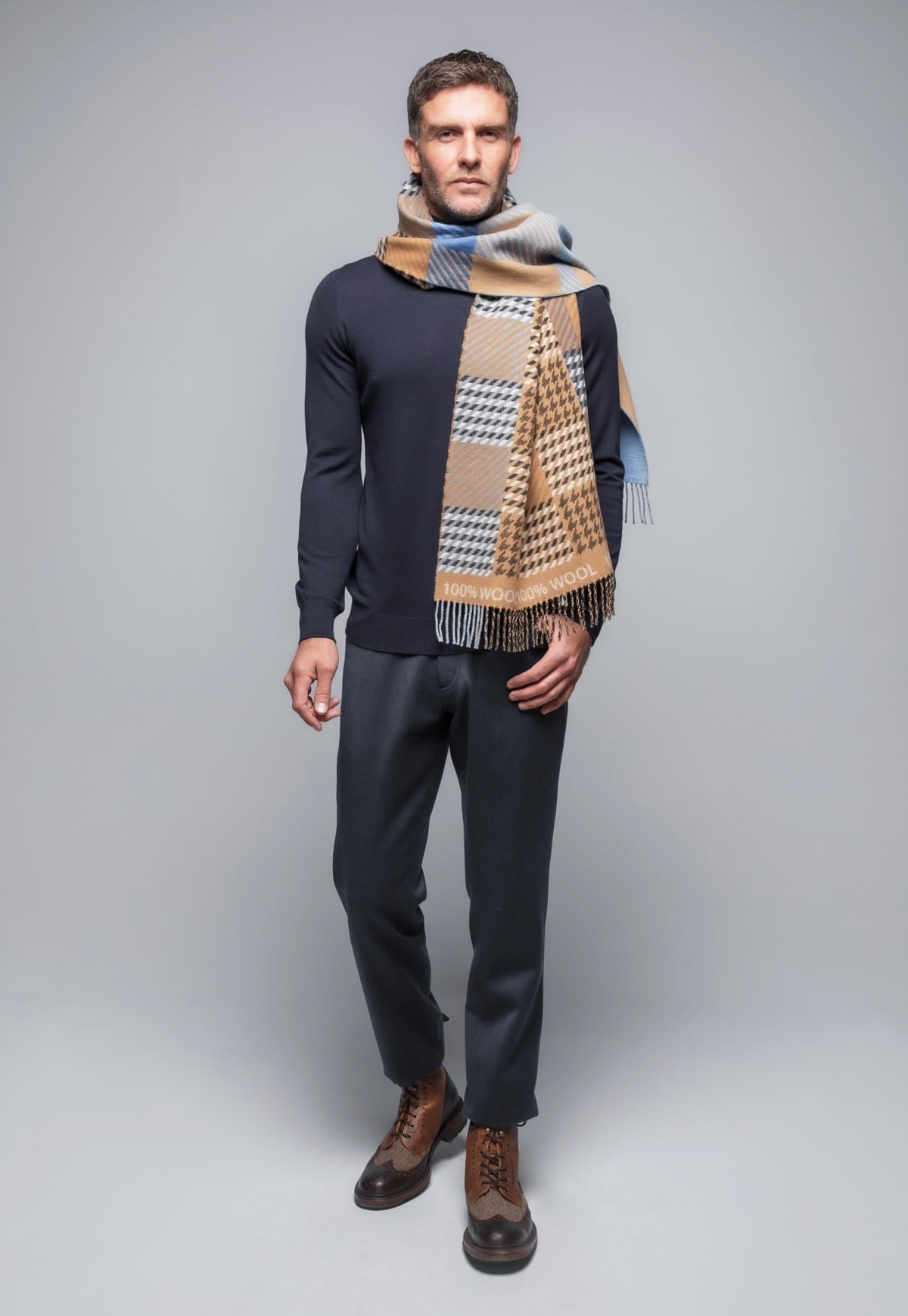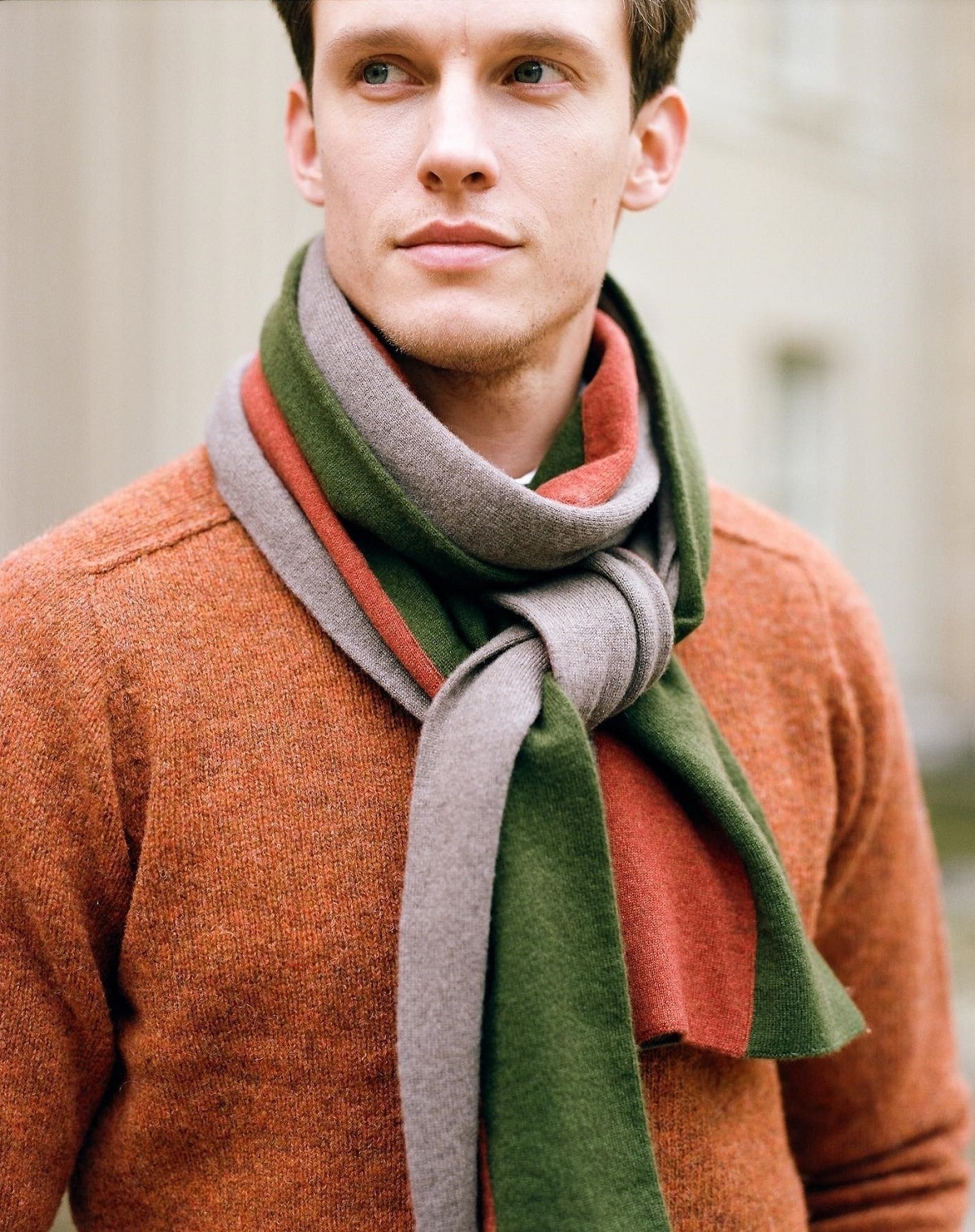1
HOME > Tips & Advice >
A GUIDE ON HOW TO WEAR A SCARF FOR MEN
Written by Ivan Yaskey in Tips & Advice on the 3rd December 2021

Scarves have an unfair reputation as a bit of a feminine accessory, despite the plethora of gender-neutral options out there. For starters, its origins go back to military usage. Colours and styles, just as with the necktie, differentiated men across ranks. Later, a warmer construction was given to pilots, back when a glass plate didn’t cover the cockpit and you were directly exposed to the elements. Today’s scarves build off the legacy of the latter. Excluding fashion-centric linen and silk options, they’re a quick way to add warmth between your coat’s collar and your headwear before you venture out, offering a more neutral and wearable alternative to the balaclava or neck gaiter.
Yet, whether you stick with acrylic, upgrade with wool, or seek the luxury echelon of cashmere, a scarf isn’t simply wrapped around. It can come undone, slipping down into your jacket and essentially providing no coverage at that point. Beyond the practical, it can end up looking bulky and awkward, as if you’re not dressing for your body type or the occasion. Thus, with mornings now bringing frosted-over car windows and snowfall not too far off in the future, here’s how you can approach this deceptively mundane accessory.

Know What You’re Working With
As already mentioned, not all scarf constructions are created equal. Strictly speaking about cold-weather scarves, materials span something basic like acrylic or another synthetic construction through the more powerful and practical wool to the elegance of cashmere. Then, there’s the choice of whether you intend to go classic with something knit to what’s essentially a long piece of fleece.
Outside of winter weather, scarves fall into the category of informal style accessory. Materials like silk and linen, as well as thinner synthetics, are more commonplace here, and you’re also likely to see more colour variation and accents like fringe. Ascots also fall within this group.
Beyond material, length and width, both play factors. Anything shorter than 60 inches is considered a shorter scarf, and anything above 80 goes above average. For width, something six to 12 inches is standard. More recent Fashion Week presentations have showcased a wider width, making it seem like you’re wrapping yourself partially with a blanket.

Know How to Wrap It
The season and intent influence when and how you’ll wear a scarf.
For Style
You’re not interested in staying warm. Instead, the scarf functions strictly as an accessory calling attention to your neck or shoulders and often falling down in line with the jacket or shirt you’re wearing.
You can find several guides out there offering detailed instructions for tying a scarf, similar in extensiveness as those you’ll see for neckties. For a more general perspective, style wear often comes down to the drape: The scarf isn’t tied but frames your coat, neck, and face. A shorter to regular length is preferred – anything longer will go past your midsection – and equal lengths on both sides of your neck, particularly lined up with your lapels, conveys this effortlessness.
You can also do this in reverse: While you’ll want to ensure both ends from your neck are of equal length, you’ll cross the material in front before draping it down your back, so that it falls on the other side of your shoulders.
The third option here is the ascot, which, to put it in simple terms, functions like a casual yet fashionable necktie. You can use a lighter-weight, shorter-length scarf for this purpose, knotting it in front of your neck and tucking it into your shirt’s collar.

For Warmth
Considering the weather now and a thicker, likely wool-based material, you have a few ways you can tie your scarf.
There’s a looser, more informal method, in which you drape the scarf around your neck but leave one end longer. This longer end goes around your neck once to the other side. For more coverage, consider taking this approach but wrapping the material twice around.
For a tighter knot, start with the same approach but cross the longer end over the shorter one and then loop it under the opening closest to your neck. From here, you can pull one of the ends for a tighter fit.
There’s also what’s described as Parisian or European style. Before putting the scarf on your neck, you’ll fold the width in half and then fold the length in half. From here, drape it around your neck. For more coverage, you’ll draw the loose ends through the looped end and knot them, ideally with the knot placed under the loop or closer to your neck, depending upon the fit you seek.

Other Factors
Beyond the basics, you’ll want to think about:
The Rest of Your Ensemble
As an accessory, your scarf should mesh with the rest of what you’re wearing. Beyond colour, think about materials. Should you be wearing it as an accessory with a suit or suit jacket, opt for a more refined material with a smaller knit – cashmere or merino wool for the winter months, or silk for more warmer conditions.
In Relation to Your Jacket
Thinking past the occasion and how you’re dressing, what type of coat will you be wearing the scarf with? Generally, you want to keep the scarf within your collar. Turning up the collar on a peacoat or overcoat helps keep it contained and from unraveling around your shoulders.
This doesn’t mean you can’t wear a scarf with a flat or narrower collar. Rather, in these instances, if the collar doesn’t or looks awkward when flipped up, keep the scarf either around your neck or shoulders or in a line going down your torso. On this last note, especially if you’re wearing it as more of an accessory, make sure the ends stay above your belt buckle, hitting at the navel or higher.


Trending
2
3
4
5
6
7
8
9
10










